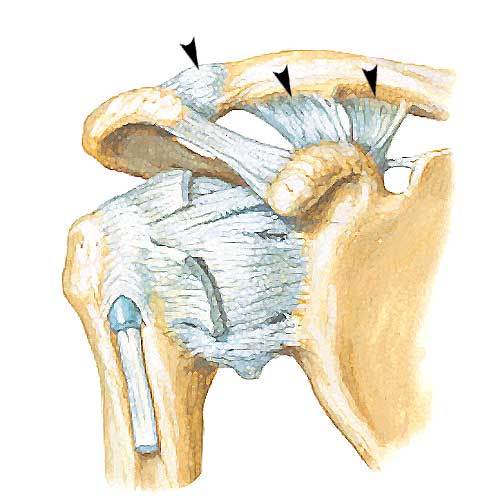AC Joint Injury
An AC joint injury refers to an injury involving the acromioclavicular joint, which is located at the top of the shoulder where the collarbone (clavicle) meets the acromion process of the shoulder blade (scapula). The AC joint is held together by ligaments and is responsible for maintaining stability and facilitating movement in the shoulder.
AC joint injuries are commonly caused by falls or direct blows to the shoulder, such as during contact sports or accidents. The severity of an AC joint injury can range from a mild sprain to a complete dislocation of the joint. The most common types of AC joint injuries include:
- AC Sprain: This is the mildest form of AC joint injury and involves stretching or partial tearing of the ligaments that connect the collarbone and shoulder blade. It is graded on a scale from I to II, with grade I being a mild sprain.
- AC Joint Separation: AC joint separation refers to the damage or rupture of the ligaments connecting the collarbone and shoulder blade, resulting in a visible deformity or bump at the top of the shoulder. It is often graded on a scale from III to VI, with higher grades indicating more severe ligament damage and joint displacement.
Symptoms
The symptoms of an AC joint injury can vary depending on the severity of the injury. Mild injuries may only cause mild pain and swelling, while more severe injuries can cause significant pain, swelling, and deformity. Other symptoms of an AC joint injury may include:
- Limited Range of Motion: Disruptions of the stabilising ligmanets of the AC joint can lead abnormal scapular movement. You may have limited range of motion in the shoulder and find it challenging to raise the arm or perform certain movements without discomfort.
- Sensation of Instability: In severe AC joint separations, the shoulder may feel unstable or loose, and the clavicle may appear visibly higher than usual, especially with cross-body and overhead movement.
Treatment
Treatment for an AC joint injury depends on the severity of the injury and your specific circumstances. Mild to moderate AC sprains can often be managed with conservative treatments such as rest, ice, pain medications, immobilisation with a sling, and physical therapy exercises to restore strength and mobility.
In more severe cases, especially with higher-grade AC joint separations or dislocations, surgical intervention may be considered. Surgery aims to realign and stabilise the joint by restoring the torn ligaments.
If you have sustained an AC injury, Dr. Arthur Turow can assess your shoulder, provide you with an accurate diagnosis and suggest appropriate treatment options specific for your individual needs.
Get Expert Help
If you have injured your shoulder, it is important to get your shoulder evaluated and perform appropriate diagnostic tests. Dr. Arthur Turow will provide expert assessment of your injury and recommend a tailored treatment for your specific injury to help you achieve the best outcome.
Please use above information as a guide only. More detailed information specific to your condition and your recovery will be given in your consultation with Dr. Arthur Turow, who will also provide additional resources to supplement your discussion. For more information, please contact the rooms of Dr. Arthur Turow on (08) 8236 4179.


